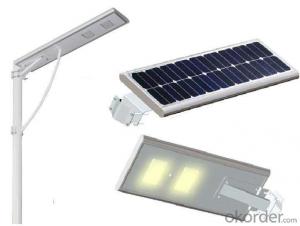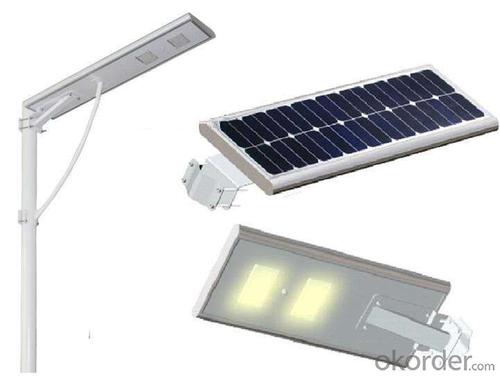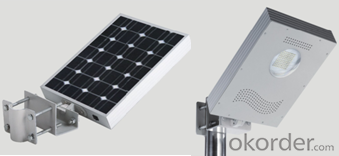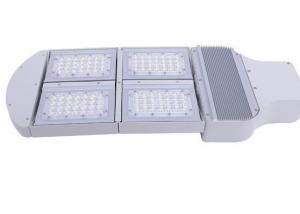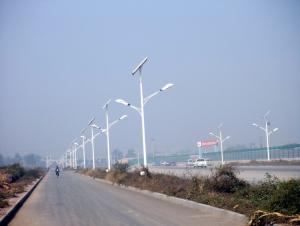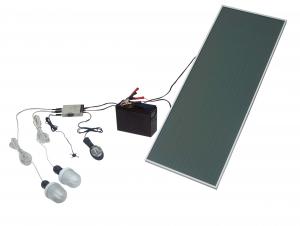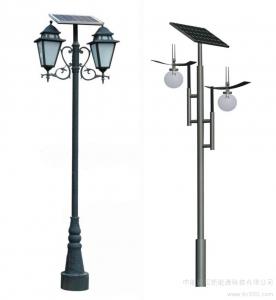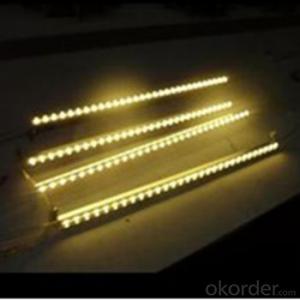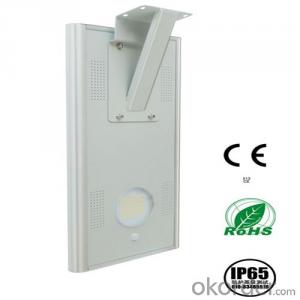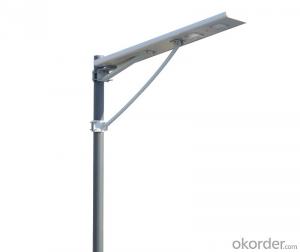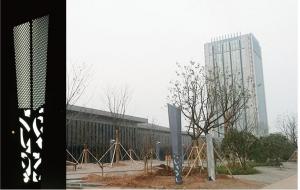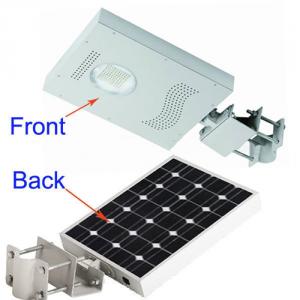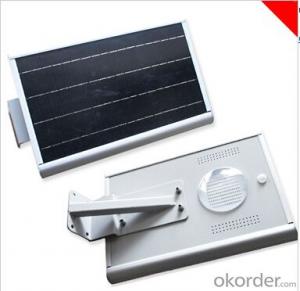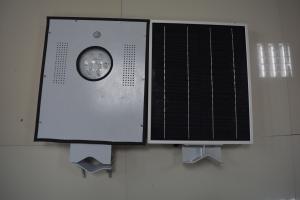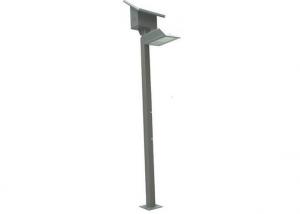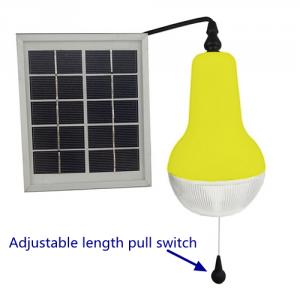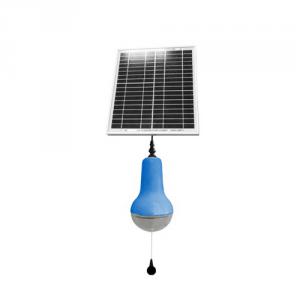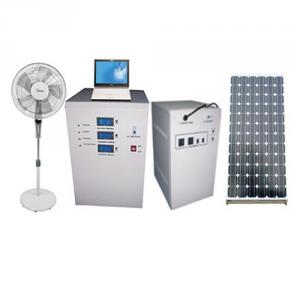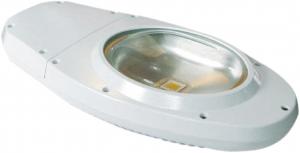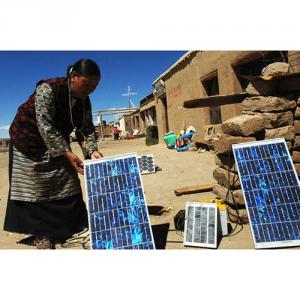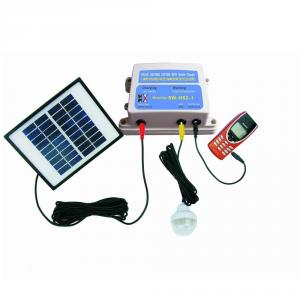Mini Solar Light All in One Solar Garden Light 8W
- Loading Port:
- Shanghai
- Payment Terms:
- TT OR LC
- Min Order Qty:
- 1 pc
- Supply Capability:
- 1000 pc/month
OKorder Service Pledge
Quality Product, Order Online Tracking, Timely Delivery
OKorder Financial Service
Credit Rating, Credit Services, Credit Purchasing
You Might Also Like
Specification
Garden Light:
Solar
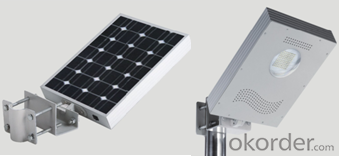
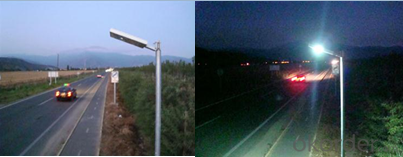
| 1. Discription: All in One Solar Garden Light | |
| 2. Characteristics: 8W 3-4M High 800-880 LM | |
| 3. Specification: | |
| Solar panel | Power | 18V15W (high efficiency mono-crystalline ) | ||
| using life | 25 years | |||
| Battery | Model | lithium battery(12.8V/6AH Grade A mottcell Brand ) | ||
| Life span | 5 years | |||
| LED lamp | Power | 12V 8W | ||
| LED Brand | Taiwan Epistar highest illumination | |||
| Lumen(LM) | 800-880lm | |||
| LIfe span | 50000hrs | |||
| Light angle | 120° | |||
| charge time | Solar battery charging | 6hrs (Intense solar light charging) | ||
| Discharge time | full power | >12 hrs | ||
| Power saving mode | >24hrs | |||
| Working temperature | Unit( ℃ ) | -30℃~+70℃ | ||
| Color temperature | Unit(k) | 2700-7000k | ||
| Installation height | Unit(m) | 3-4m | ||
| two light distance | Unit (m) | 8-10m | ||
| Lamp material | Aluminum Alloy | |||
| Certification | CE / ROHS / IP65 | |||
| Warranty | 2 years | |||
| Packing & weight | Product size | 540*320*55mm | ||
| Product weight | 5.8kg | |||
| Packing carton | neutral | |||
| Packing size | 560*570*410mm | |||
| BOX | 4set/box | |||
| Gross weight | 27kg | |||
| Container | 20'container | 900pcs | ||
| 40' container | 1920pcs | |||
- Q: Can solar lights be used for outdoor weddings?
- Yes, solar lights can be used for outdoor weddings. They are a great eco-friendly and cost-effective option for providing ambient lighting in outdoor settings.
- Q: Do solar lights have a built-in emergency alert system?
- No, solar lights typically do not have a built-in emergency alert system. They are designed to provide illumination using solar power and are not equipped with features like emergency alerts.
- Q: How do solar lights contribute to sustainable living?
- Solar lights contribute to sustainable living in several ways. Firstly, they harness the power of the sun, which is a renewable and abundant source of energy, eliminating the need for electricity generated from non-renewable resources. This reduces reliance on fossil fuels and decreases carbon emissions, mitigating climate change. Additionally, solar lights require minimal maintenance and have a long lifespan, reducing waste and the need for frequent replacements. Furthermore, they provide an affordable and accessible lighting solution for areas without access to electricity, improving quality of life and promoting social equity. Overall, solar lights offer an eco-friendly and sustainable alternative to traditional lighting options.
- Q: Can solar lights be used for outdoor marinas or boat docks?
- Yes, solar lights can be used for outdoor marinas or boat docks. Solar lights are a great option as they do not require electrical wiring, making them convenient and cost-effective for installation in these outdoor areas. They rely on solar energy to charge during the day and illuminate the marina or boat dock at night. Additionally, solar lights are typically designed with durable and waterproof materials to withstand the outdoor elements, making them suitable for use in these environments.
- Q: Are solar lights suitable for remote surveillance systems?
- Yes, solar lights are suitable for remote surveillance systems. They provide a reliable and cost-effective power source for surveillance cameras and other equipment in remote locations where access to electrical grids may be limited or non-existent. Solar lights can be easily installed and maintained, ensuring continuous operation of the surveillance system even in areas with no traditional power sources. Additionally, solar lights often come with built-in motion sensors, enhancing the effectiveness of the surveillance system by triggering the cameras to record when motion is detected.
- Q: Can solar lights be used for camping?
- Yes, solar lights can definitely be used for camping. They are a great alternative to traditional lighting options as they are portable, lightweight, and eco-friendly. Solar lights can be charged during the day using sunlight and provide ample illumination at night, making them ideal for illuminating campsites, tents, or outdoor areas while camping.
- Q: How do solar lights handle power outages or grid failures?
- Solar lights have been designed to function independently of the grid, ensuring that they remain unaffected by power outages or grid failures. Typically, these lights come equipped with rechargeable batteries that store the energy harnessed from the sun during the day. Once the sun sets or in the event of a power outage, these batteries power the LED lights, illuminating the surroundings throughout the night. This self-sufficient aspect of solar lights renders them a dependable and convenient lighting option in areas prone to power outages or where the grid infrastructure is unreliable. Furthermore, certain solar lights may possess a backup power source, such as a secondary battery or a hand-crank generator, guaranteeing continuous operation even during extended periods of darkness or limited sunlight. In summary, solar lights offer a resilient and sustainable lighting solution that can function independently of the grid during power outages or grid failures.
- Q: Can solar lights be used to charge small electronic devices?
- Small electronic devices can indeed be charged using solar lights. Many solar lights are equipped with USB ports or adapters specifically designed for the direct charging of smartphones, tablets, and portable speakers. These solar lights feature a compact photovoltaic panel that effectively converts sunlight into electricity, which in turn powers the electronic device. It is worth noting, however, that the charging process may be slower compared to conventional methods due to its reliance on the availability of sunlight. Therefore, it is recommended to position the solar light in a location that receives abundant sunlight for efficient charging. Furthermore, it is advisable to verify the specifications and capabilities of the solar light to ensure compatibility with the particular electronic device being charged.
- Q: The advantages of solar garden lights
- To solar energy as energy, do not need to pay electricity; do not need to pull the line, the installation is very convenient.
- Q: Are solar lights resistant to extreme temperatures?
- Yes, solar lights are generally designed to be resistant to extreme temperatures. They are built with materials and components that can withstand both very cold and very hot temperatures without affecting their performance.
Send your message to us
Mini Solar Light All in One Solar Garden Light 8W
- Loading Port:
- Shanghai
- Payment Terms:
- TT OR LC
- Min Order Qty:
- 1 pc
- Supply Capability:
- 1000 pc/month
OKorder Service Pledge
Quality Product, Order Online Tracking, Timely Delivery
OKorder Financial Service
Credit Rating, Credit Services, Credit Purchasing
Similar products
Hot products
Hot Searches
Related keywords
